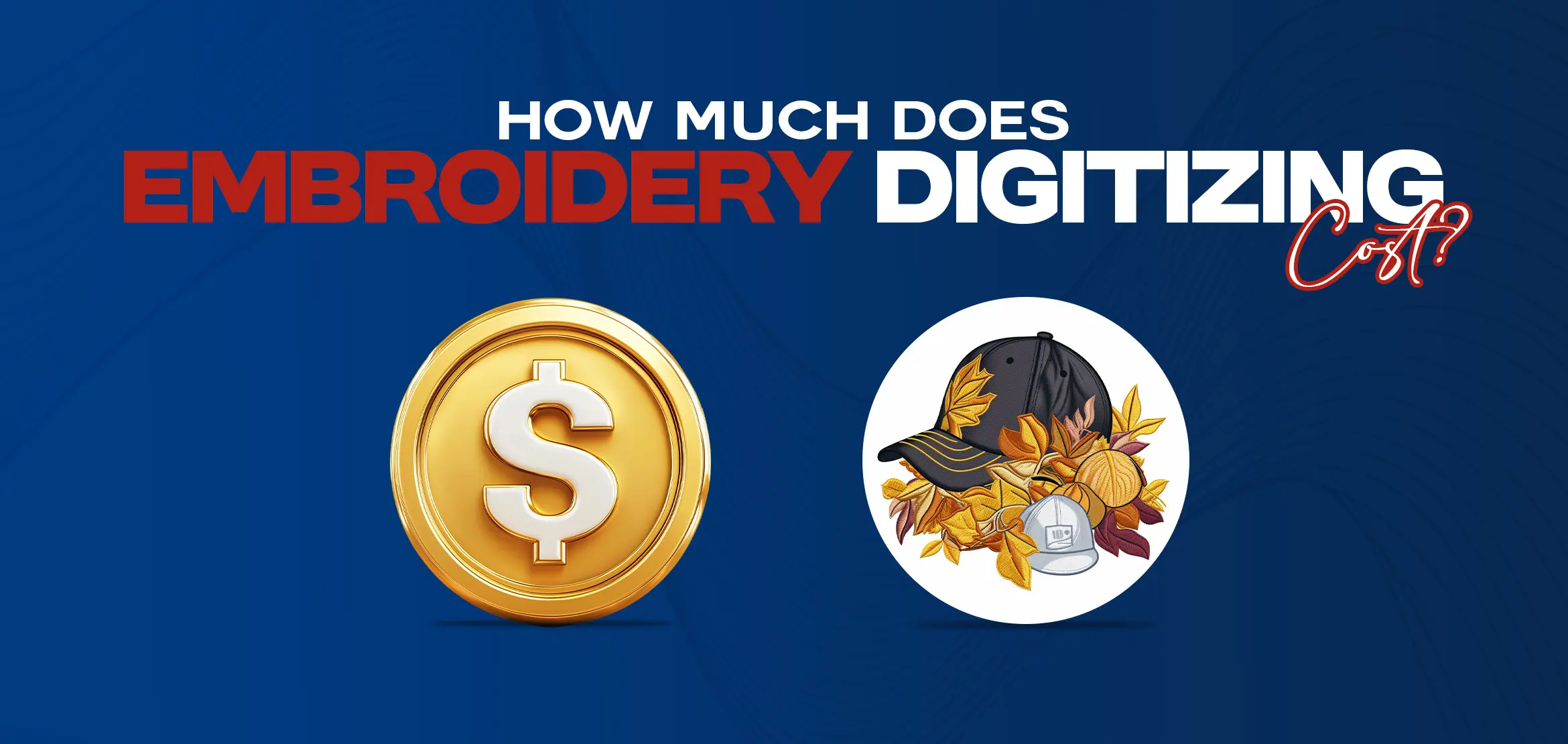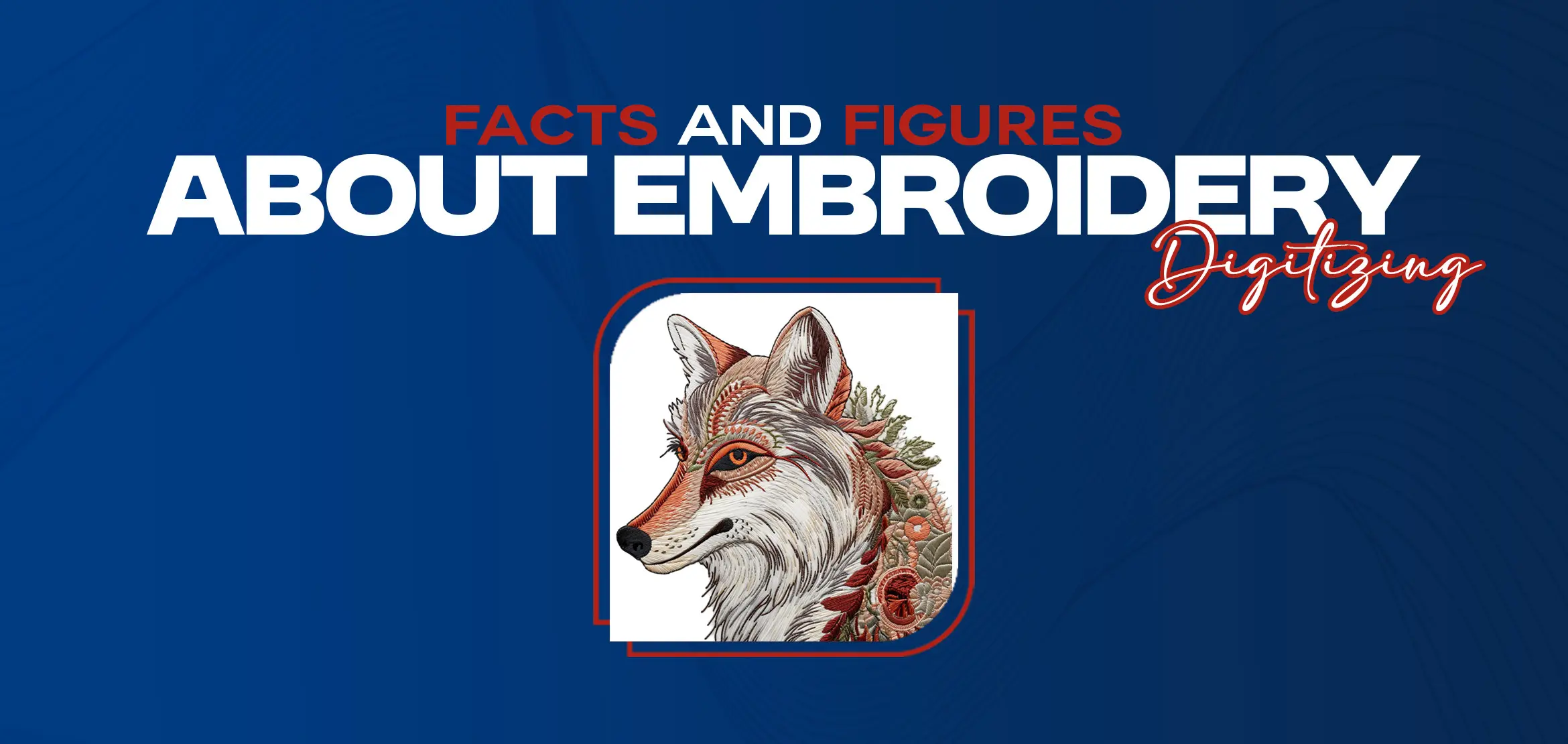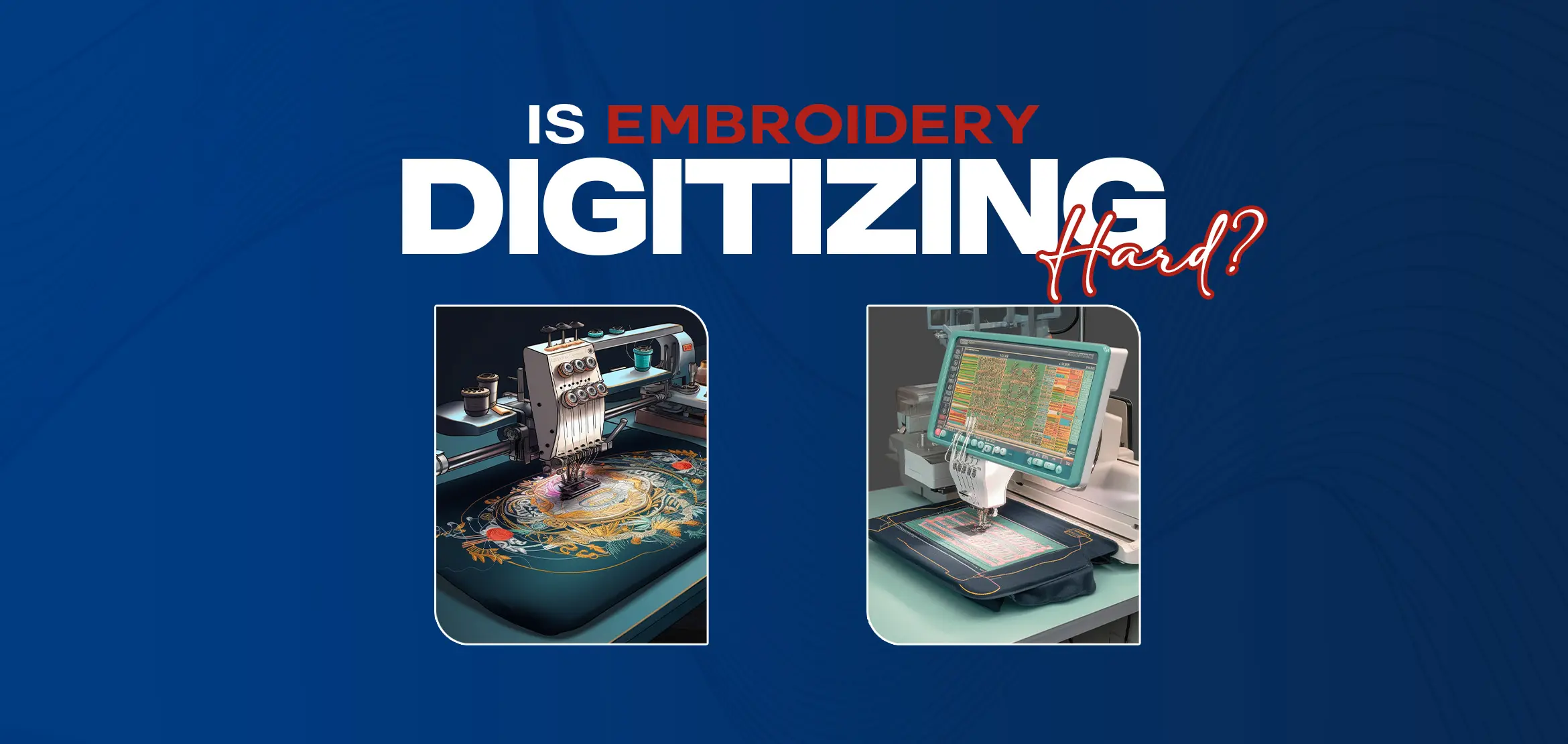
How much does embroidery digitizing cost?
Table Of Content
- Getting Your Logo Digitized for Embroidery: Pricing and Tips
- Pricing
- Tips
- Is Embroidery Cheaper than Screen Printing ?
- The Quantity of the Order
- The Complexity of the Design
- The Type of Fabric
- The Desired Look and Feel
- Set-up Fees and Colour Count
- Versatility
- Is Embroidery an Expensive Hobby ?
- Start with Basic Materials
- Choose Projects You Enjoy
- Have Fun with It
- The Most Expensive Types of Embroidery: Luxury Techniques and Materials
- Goldwork Embroidery - Luxury Materials
- Needle Lace - Intricate Techniques
- Haute Couture Embroidery
- Why is Embroidery So Expensive?A Look into the Manufacturing and Design Processes
- 1: Design Process
- 2: Materials
- 3: Labor Costs
- 4: Overhead Costs
- 5: Customer Service
- Conclusion
Embroidery is one of the oldest and most versatile forms of decorative stitching, used for everything from clothing embellishments to corporate branding and high-end couture. However, one question often arises how much does digitizing embroidery cost? Whether you want to get your logo embroidered on some polo shirts or are a hobbyist looking to create custom gifts for your friends and family, understanding the various costs associated with embroidery can help you make informed decisions and get the most value for your money for affordable digitizing. Embroidery Digitizing: Cost Factors to Consider Digitizing embroidery designs or digitize embroidery designs cost can vary greatly depending on several factors, such as: 1: Design Complexity 2: Stitch count 3: Turnaround time A simple design with fewer stitches can cost between $10 to $30, while a complex structure with more than 10,000 stitches can cost up to $150 or more. Some embroidery design digitizing services charge based on the number of stitches in a design, with a standard rate of $0.50 - $1 per thousand stitches even when logo digitizing software. In addition to the design itself, other cost factors to consider include rush orders, resizing, and format conversion fees and same day embroidery digitizing. charges as well. Rush orders may have an additional fee to speed up the process, while resizing may require extra work and cost. Some embroidery digitizing services or top 10 embroidery digitizing companies may also charge format conversion fees if the design needs to be converted to a different file format to work with the embroidery machine. Considering all these factors when estimating the total cost of embroidery digitizing services is essential to avoid surprises or additional expenses. Before you can get your logo embroidered on any item, you must digitize it. Here are some pricing and tips to consider when getting your logo digitized for embroidery. The cost of digitizing your logo for embroidery can vary depending on the provider, the complexity of the design, and the turnaround time. However, the industry standard ranges from $10 to $150 or more, depending on the stitch count and the complexity of the design. Some embroidery digitizing services charge based on the number of stitches in a design, with a standard rate of $0.50 - $1 per thousand stitches. Other cost factors include rush orders, resizing, and format conversion fees. Shop around for embroidery digitizing service providers and check their online reviews, pricing, turnaround time, and quality of work. Some embroidery digitizing service companies may offer volume discounts or free digitization for a certain minimum order quantity or stitch count. Before requesting digitization services, ensure your logo is in a high-resolution format, such as a vector file. This will ensure that your design is sharp and that there won't be any loss of quality when it's resized for embroidery. Be sure to ask for a sample sew-out of the design before giving the final approval to avoid errors and pricey corrections. When it comes to colors, remember that the more colors in a design, the more expensive the embroidery will be. o, simplify your plan to keep the costs down. Lastly, remember the minimum stitch count that your embroidery service provider requires. If your design is simple enough, the minimum stitch count may be met, which could also affect the cost of embroidery. When it comes to choosing between embroidery and screen printing, cost-effectiveness depends on various factors, including: Screen printing is more cost effective for large orders, while embroidery is suitable for smaller orders. Simple designs with fewer colors are more cost-effective with screen printing, while detailed designs with many colors and textures are more suited for embroidery. Screen printing works best on cotton and other standard fabrics, while embroidery can work on a broader variety of fabrics, including non-woven and Fleece materials. Embroidery adds an upscale feel, durable finish, and perceived value to products, which can justify the higher costs compared to screen printing. Screen printing requires color separations and special equipment, which can add to set-up fees and color count costs. Meanwhile, embroidery digitization can include resizing or format conversion fees. Screen printing is limited to flat surfaces, while embroidery can be applied to curved, round, or uneven surfaces, making it ideal for hats, bags, and outerwear. Ultimately, the decision between screen printing and embroidery depends on the type of product, the quantity of the order, the complexity of the design, and the desired look and feel. Each method has its unique advantages and cost-effectiveness. Consult with your embroidery or screen printing service provider to choose the best option for your needs and budget. Embroidery is a fun and rewarding hobby that allows you to express your creativity while producing beautiful art pieces. However, like any hobby, embroidery comes with costs that can add up if you need to be more careful. Here are some tips for balancing cost and creativity as an embroidery hobbyist: Embroidery can be an affordable hobby if you start with basic materials and build up your skills and supplies over time. You can find embroidery starter kits for as low as $20 and essential embroidery floss and needles for under $10. Then, as you become more experienced, you can invest in better-quality materials and equipment. One way to keep costs down is to choose projects that you enjoy and that are within your skill level. This will prevent you from buying unnecessary materials and equipment you may not need for your current project. In addition, completing a project, you love is much more satisfying than forcing yourself to finish something you don't enjoy. Remember, the joy of embroidery comes from the creative process. Don't put too much pressure on yourself to create perfect pieces, and enjoy the learning process. If you make mistakes, use them as an opportunity to learn and improve your skills. Using these tips, you can balance the costs of embroidery and enjoy the creative process without breaking the bank. An embroidery is an art form that dates back thousands of years and has been used to adorn clothing, accessories, and even household items with intricate designs and patterns. While embroidery can be a relatively affordable hobby or decoration technique, some forms are costly due to the luxury materials and complex processes. One reason for the high cost of some types of embroidery is the use of luxury materials such as gold, silver, and precious stones. Goldwork embroidery, for example, involves stitching with gold metal threads, which can cost hundreds of dollars per spool. Similarly, stumpwork embroidery may use pearls, beads, and metals to create raised, three-dimensional designs. Along with luxury materials, some embroidery techniques require intricate and time-consuming processes that drive the cost. Needle lace, for example, involves using a single needle to create delicate designs in fabric, while silk shading embroidery uses multiple shades of silk thread to create lifelike designs. One of the most expensive embroidery types is used in Haute fashion, where intricate designs are hand-embroidered onto bespoke garments and accessories. This process requires customized designs, high-end materials, and skilled embroiderers with years of experience. As a result, the cost can easily reach thousands or even tens of thousands of dollars. Embroidery is a beautiful and versatile art form that can range from affordable and accessible to luxurious and exclusive. Whether you enjoy embroidery as a hobby or invest in high-end techniques, the beauty of the craft remains. Embroidery is an intricate and detailed process that involves numerous steps from design to finished product. In addition, the manufacturing and design processes involved in embroidery contribute to its cost. Here are some reasons why embroidery can be expensive: The design process for embroidery can be time-consuming and requires expertise. The design must first be digitized, which involves creating a digital file that the embroidery machine can read. This process requires specialized software and tools. The digitized design must also be tested to ensure that the embroidered design will look the same as the original design. The selection of thread colours is also an essential aspect of the design process that requires time and careful consideration. The materials used in embroidery, such as thread, backing, and stabilizers, contribute to its cost. High-quality threads are often more expensive, but they produce a better-quality embroidery design that is more durable and long-lasting. Backing and stabilizers also add to the cost of embroidery. Therefore, the correct type of backing and stabilizer must be chosen to ensure that the final product is of the highest quality. Embroidery production requires skilled labour for the embroidery process to be successful. As embroidery involves careful stitching and attention to detail, it is labor-intensive. Therefore, professional workers will cost more, reflected in the final embroidery product. Embroidery equipment requires routine maintenance, which can be expensive. In addition, running an embroidery operation involves rent, taxes, insurance, and other overhead costs. These costs contribute to the final price of embroidery products. Customer service is an essential aspect of embroidery operations. Excellent customer service costs include hiring support staff, responding to inquiries, and communicating with customers regarding their orders. Embroidery operations often absorb this cost and can contribute to the cost of embroidery products. Embroidery is a complex and intricate process that requires skill, time, and attention to detail. Its cost reflects the material and labour-intensive processes involved. However, the result is a unique, high-quality product that can last a lifetime.Getting Your Logo Digitized for Embroidery: Pricing and Tips
Pricing
Tips
Is Embroidery Cheaper than Screen Printing ?
The Quantity of the Order
The Complexity of the Design
The Type of Fabric
The Desired Look and Feel
Set-up Fees and Colour Count
Versatility
Is Embroidery an Expensive Hobby ?
Start with Basic Materials
Choose Projects You Enjoy
Have Fun with It
The Most Expensive Types of Embroidery: Luxury Techniques and Materials
Goldwork Embroidery - Luxury Materials
Needle Lace - Intricate Techniques
Haute Couture Embroidery
Why is Embroidery So Expensive?A Look into the Manufacturing and Design Processes
1: Design Process
2: Materials
3: Labor Costs
4: Overhead Costs
5: Customer Service
Conclusion
In conclusion, the cost of embroidery digitizing can vary depending on several factors, such as design complexity, stitch count, and turnaround time. Therefore, it is essential to shop around for embroidery digitizing service providers and consider factors such as pricing, quality of work, and turnaround time. When deciding between embroidery and screen printing, consider your design complexity, fabric type, quantity, and desired look and feel. While embroidery can be an expensive hobby or luxury craft, it can also be an affordable and enjoyable creative outlet if you start small and build up your skills and supplies over time.










